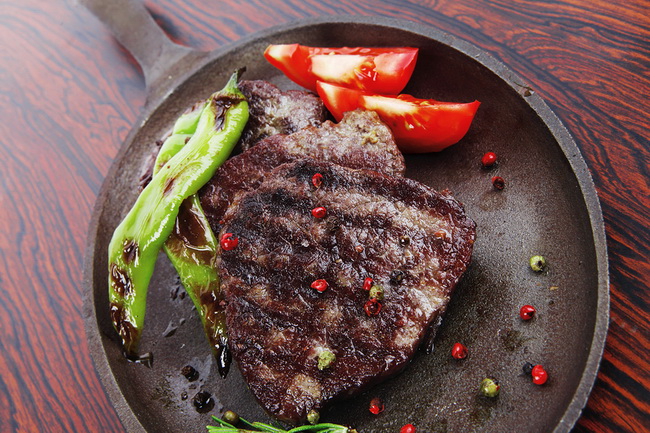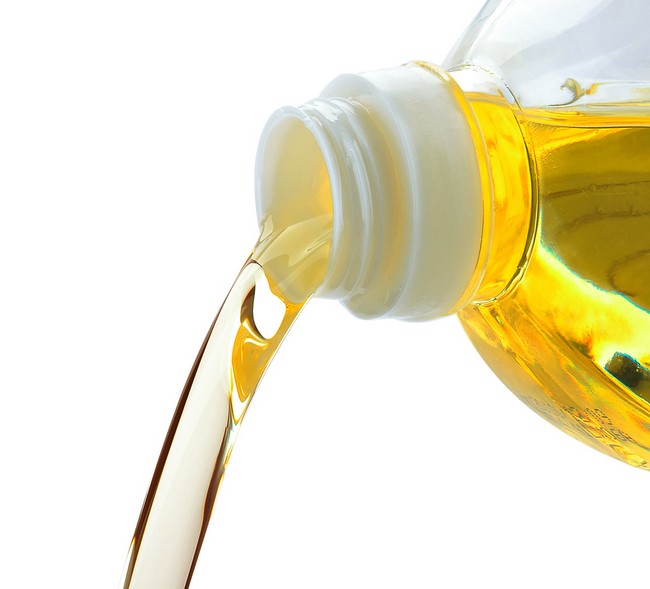- Make It Yourself Lavender Heart-Shaped Bath Bombs!
- 20 Things You Never Knew About “Down There”
- 12 Best Foods For Those Suffering From Arthritis Pain
- 12 Personal Hygiene Mistakes Almost Everyone Makes (Mom Never Told You About #4!)
- 15 Medicinal Plants And Herbs From The Cherokee People
- 12 Mind-Blowing Benefits Of Drinking Coconut Water During Pregnancy
- 12 Outstanding Winter Foods That Won’t Fatten You Up Like A Christmas Turkey
The Truth about Using Cast Iron Pans and How to Season Them

Photo credit: bigstock.com
You have probably heard quite a bit already about the dangers of using non-stick or Teflon coated cookware and how cast iron is the way to go. However, you have probably also heard a lot of stories, rumors, and advice about what you can do with a cast iron pan, whether new pans or old pans are better, and how you should season them. And what the heck is “seasoning” when talking about a pan anyway?
The truth is that Teflon pans, although easy and convenient, are dangerous. When they get very hot, such as when you fry foods, or, oops, burn food, they emit toxic chemicals into the air that are deadly enough they can kill small animals. Once the finish has been compromised by a scratch or chip, extremely tiny pieces flake off and end up in your food. It’s dangerous as well as disgusting and no one wants to think about eating chemicals like that, or worse, feeding those chemicals to your children!
So chances are really good that you have decided to go with some good old-fashioned cast iron pans. That’s a great choice! You can rush right out and buy them new, or scour your local thrift stores and yard sales for them, or ask your grandmother for a few of her old ones. No matter where you find them or how you obtain them, you won’t regret having cast iron pans.
One of the best things about cast iron pans is that you can use them on the stove, in the oven, on the grill, or even take them camping and use them over an open campfire. They are inexpensive, last a lifetime, and are so darn tough that if you drop one on the floor, the floor is going to be your concern regarding damage, not your cast iron pan!
When it’s been properly seasoned, a cast iron pan is easy to clean and almost as good as non-stick pans. It won’t cook exactly like your Teflon pan, it won’t be as non-stick as your Teflon pan, but unless you drop the pan on someone’s head, it also won’t hurt anyone– something you can never say about a non-stick pan.
Besides being non-toxic, cast iron actually has health benefits, which is another thing no one can say about Teflon. Every time you cook, tiny bits of iron are being passed into your food. Iron builds up red blood cells, so this is super great for those who are anemic, or for pregnant women.
Continue to Page 2

Photo credit: bigstock.com
Let’s talk turkey about cast iron pans; the do’s, the don’ts, the problems, and how to season one properly, which is much easier than you might think. Here are some common misconceptions about cast iron pans:
1. Never Cook Acidic Foods in Cast Iron
Some people believe that with acidic foods, such as tomatoes, the acid will leech into the pan or somehow react with the metal and give your foods an off or ill tasting flavor and might even kill you.
Well, alright, perhaps no one used the words “kill you” but people make it sound as if cooking tomatoes in a cast iron pan is the worst thing in the world and you are better off using Teflon for that. Baloney! If your pan is well-seasoned, your food is actually sitting on the layer of polymerized oil, not actually on the metal itself.
2. Cast Iron Heats More Evenly Than Any Other Pan
Absolutely not true. The truth is cast iron will have hot spots where the flame is and much cooler spots where the flame is not touching the pan. One of the great things about cast iron, however, is that once the pan is hot, it stays how for a long time. So if you want to sear a steak, you can do this by letting your pan preheat for about 10 minutes, turning it every two minutes, before you put that steak on.
3. Cast Iron Pans are a Pain to Maintain
Some people mistakenly believe that cast iron pans will rust heavily when not used daily or that the slightest bump will chip off the seasoning. You wonder if these people have ever really used a cast iron pan. These pans are as tough as their name implies. This is why you see 75 year old pans still being used. New pans come pre-seasoned and can be used right away but even when you season your pans yourself, it won’t chip off. Stack those pans on top of each other, it’s just fine. If they are dried after being washed (which is our next subject) they won’t rust. Really.
Continue to Page 3

Photo credit: bigstock.com
4. Never Wash Cast Iron with Soap and Water
It seems as though the theory is that since seasoning is a thin layer of oil that coats the pan, soap will wash it off. Well, this is not entirely true. Seasoning does involve a thin layer of oil, but after it is heated numerous times, it becomes a thin layer of polymerized oil, which is almost like a thin layer of plastic. (Note that it’s NOT actually plastic, only similar to) Now you don’t want to let your pan sit in the sink and soak overnight, for example, that can cause rust. But feel free to go ahead and wash it!
5. Never Use Metal Utensils on a Cast Iron Pan
Again, you wonder if the people who make these claims have ever used a cast iron pan. The theory behind this is that cast iron pans are somehow delicate and might chip if you use metal utensils. As we mentioned before, the seasoning on a cast iron pan is very resilient and it won’t chip off by using a metal spoon or fork and you certainly can’t hurt the pan itself. If by chance you see any little black flakes on the bottom of the pan after cooking, it’s more than likely burned on food that you didn’t remove entirely the last time you used the pan because you were afraid to wash it with soap and water!
SEE ALSO: Food Storage Ideas Without Using Toxic Plastic
6. New Pans and Old Pans Are Exactly the Same
This sounds like it makes sense, right? Metal is metal, so there’s no difference, right? Well, this is partially true. The material is the same, but the way they make the pans has changed. Pre-1950, the pans were made by casting in molds that were sand-based, then polished by hand until smooth. Since then, production has become more streamlined and this final polishing process has been eliminated. This means that older pans have very smooth, satiny like finishes while newer pans have a more pebbly like or bumpy surface. Will this difference matter when it comes down to cooking? Not much. An older pan might be a little bit more non-stick than the new pan, but for most people, you won’t notice much difference other than in appearance.
Continue to Page 4

Photo credit: bigstock
Now that you have the facts about cast iron pans, are you ready to learn how to season one and maintain it? It’s so easy, you will wonder why you waited so long to get your hands on some of your grandmother’s pans!
Seasoning Done Right
1. On the Stove Method
Even if you buy a new pre-seasoned pan, it can always do with a bit more protection. In this method, you heat the pan on the stove until it is literally smoking hot. Turn off the fire and, using a pot holder, rub a little oil (lard, tallow, ghee, or refined coconut oil) all over the pan, inside and out. Let it cool completely and repeat. Do this four or five times, until you get a nice sheen on the pan. Then you are good to go!
2. Oven Method
If all that turning on and off stuff is a turn off, then try this method. Place your pan in the oven and set it for 325 degrees. After about 10 minutes, using a pot holder, remove the pan and rub the pan with the oil of your choice. Be sure you coat the entire pan, inside and out. Now take another towel or rag and wipe off most of the oil until only a thin layer remains. Place the pan upside down in the oven for 2 hours. Now, turn off the oven, but leave the pan inside until it has completely cooled. You should also repeat this process three or four times before using to ensure that your pan is completely sealed.
Maintenance
Wash your cast iron pan after every use, and dry thoroughly with a towel right away to prevent rust. Alternately, you can put it back on the stove after washing and turn on the flame to dry it. Many people like to give their pans a bit of seasoning after every wash by putting it back on the stove, turning on the flame, and once you see that about 95 percent of the water has dried, give the inside of the pan a quick wipe with a bit of oil and allow to cool again.
If you take your pans camping, re-season them again when you get home. If you choose to simply towel dry your pans after washing, re-season them about once a year.
The best way to keep your cast iron pans in the best possible condition is to use them often! The more you fry, sear, and bake in them the better and stronger that seasoning becomes.
Happy cast iron cooking!
References:

































Gabe
Jun 12, 2015 at 1:02 pm
polymerized oil? Sounds unnatural and possibly harmful.
frank
Jun 12, 2015 at 5:40 pm
The “pre-seasoned” pans are seasoned with soybean oil. None of the customer service reps I have queried knew ANYthing about gmos, let alone whether their pans were seasoned with gmo soy oil. I always wash my new pans in HOT water with detergent and season anew once dry.